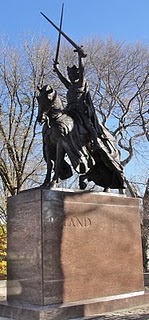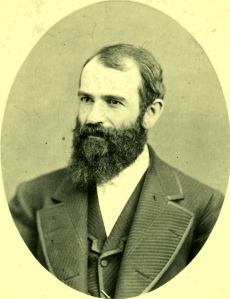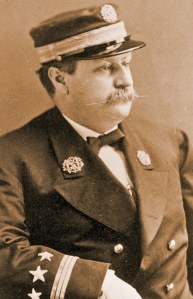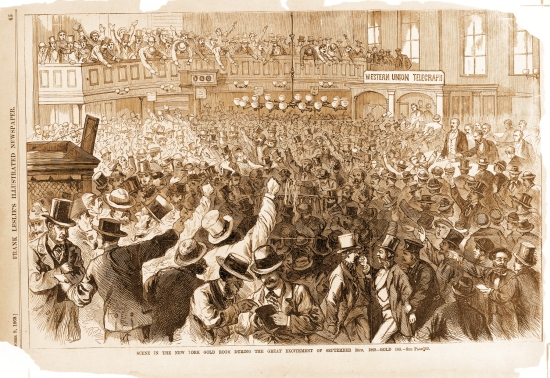Best statues in NYC’s Central Park: Poland’s King Jagiello, hero of 1410
December 6, 2010 at 11:49 pm | Posted in Uncategorized | Leave a comment
Six hundred years ago, this man atop his bronze horse in full battle regalia, pointing his dual sabers to the sky, was the single most powerful on earth. He was Poland’s King Wladyslaw Jagiello, and on July 15, 1410, he led an army of 50,000 Polish and Lithuanian knights, cavalry, and foot soldiers against a marauding horde of 32,000 invading Teutons — primarily Germans — near the small town of Grunwald.
 By sundown, Jagiello’s soldiers had slaughtered over 26,000 of the invaders, utterly demolishing their army. The Battle of Grunwald, as it came to be called, would reshape Central Europe for the next 300 years, placing King Jagiello in command of a vast, united Polish-Lithuanian empire that included large swaths of modern Germany and Russia. It was also one of the most civilized places in Medieval Europe, complete with bicameral legislature, checks on royal power, religious tolerance (this is when Jewish people came to escape persecution further west), and a home to Renaissance art. Jagiello’s vistory was one of two game-changing military events of the Fifteenth Century, the other being England’s 1419 triumph over France at Agincourt, immortalized by William Shakespeare in his play Henry V. (Click here to see Kenneth Branagh delivering Henry’s terrific speech to his troops.)
By sundown, Jagiello’s soldiers had slaughtered over 26,000 of the invaders, utterly demolishing their army. The Battle of Grunwald, as it came to be called, would reshape Central Europe for the next 300 years, placing King Jagiello in command of a vast, united Polish-Lithuanian empire that included large swaths of modern Germany and Russia. It was also one of the most civilized places in Medieval Europe, complete with bicameral legislature, checks on royal power, religious tolerance (this is when Jewish people came to escape persecution further west), and a home to Renaissance art. Jagiello’s vistory was one of two game-changing military events of the Fifteenth Century, the other being England’s 1419 triumph over France at Agincourt, immortalized by William Shakespeare in his play Henry V. (Click here to see Kenneth Branagh delivering Henry’s terrific speech to his troops.)Personally, I had never heard of King Jagiella (damn American education system!!) until last week when I happened to come across this fantastic statue of him in New York City’s Central Park. The
 work of Polish sculpter Stanislaw Ostrowski, it served originally as centerpiece for Poland’s exhibit at the 1939 New York World’s Fair. But the outbreak of World War II, in which Poland was quickly devoured by Nazi Germany and Stalinist Russia, left it stranded in America. New York Mayor Fiorello Laguardia fell in love it and lobbied to keep it in New York City. In 1945, the Polish government-in-exile agreed, and it was moved to its current spot in Central Park.
work of Polish sculpter Stanislaw Ostrowski, it served originally as centerpiece for Poland’s exhibit at the 1939 New York World’s Fair. But the outbreak of World War II, in which Poland was quickly devoured by Nazi Germany and Stalinist Russia, left it stranded in America. New York Mayor Fiorello Laguardia fell in love it and lobbied to keep it in New York City. In 1945, the Polish government-in-exile agreed, and it was moved to its current spot in Central Park.
Next time you’re in the neighborhood, don’t miss it. It’s at the east end of Turtle Pond, near the Great Lawn, not far from Cleopatra’s Needle, and an easy walk from the Upper East Side.
$1,420 Gold: Headed for a Crash?
November 24, 2010 at 9:47 pm | Posted in Uncategorized | Leave a commentThis month, November 2010, saw the nominal price of gold blast itself into the record books with a historic new high of $1,420 per ounce, almost triple the price a decade ago. It’s been a remarkable run. Too good to be true?
Before gold bugs get too giddy, it’s worth remembering that this year also marks another anniversary, the 141st, of the darkest day ever in American gold trading: Black Friday (September 24) 1869, when the notorious corner by Jay Gould and Jim Fisk climaxed in a spectacular crash that crippled Wall Street for months, bankrupting thousands, freezing the national economy, and spewing scandal to the very door of the White House. It caused an estimated $100 million in financial value to vanish in a wink, worth multiple billions in modern money.
Still, 1869’s Black Friday was the ugliest, partly because both the price run-up and crash that year stemmed from the unabashed, garish actions two greedy speculators trying to enrich themselves at the expense of everyone else: James Fisk Jr. (below, left, in his ersatz “Admiral” uniform) and Jay Gould (below, right). 

Fisk and Gould pulled off their famous gold corner decades before the battery of modern US financial regulators came on the scene: the SEC, CFTC, Federal Reserve, bank overseers, and even industry self-policing groups like FINRA or NFA. Fisk and Gould lost fortunes when the corner collapsed: Even back in 1869, the market was bigger than any two players, though it took the combined weight of the US Treasury announcing emergency gold sales and a pool of big banks dumping gold on the market to break their stranglehold.
Regulators can help, but commodities are notorious for volatility. Just two years ago, for instance, in 2008, we saw the price of a barrel of crude oil drop from nearly $150 in July to less than $34 in December, a whopping 75% loss, part of a sector-wide reversal.
Hello world!
November 24, 2010 at 9:31 pm | Posted in Uncategorized | 1 CommentWelcome to WordPress.com. This is your first post. Edit or delete it and start blogging!
Al Franken makes it 60. But do Senate Super-Majorities Matter?
July 1, 2009 at 2:49 pm | Posted in Uncategorized | Leave a commentDemocrats today are celebrating Al Franken’s long-awaited victory as Minnesota’s newest United States Senator. The cheers are not just for him. With Franken, Democrats will now number 58 in the Senate. This, along with two friendly Independents, will give them enough seats and potential votes – 60 – to block Republican filibusters and really control the Chamber.
That’s real power. And it sounds great.
But don’t believe it.
Over the years, we’ve had plenty of Congresses with large, lopsided partisan majorities. Some did great things. Others failed miserably. What mattered wasn’t the size of the Majority, but whether it reflected a true national consensus, and whether it did its job.
The Scorecard on Cloture
First, the raw numbers.
The US Senate has always loved filibusters. Up until 1919, there was no way to stop a single Senator from talking his heart out and endlessly delaying a bill, thus killing it. Cloture, as adopted in 1919, allowed a majority of Senators to end debate, but only if they could muster a two-thirds vote. This was rare. From 1919 until 1970, Senators invoked Cloture only 8 times. Filibuster reigned supreme.
Then, in 1975, the Senate lowered its Cloture target to three-fifths, or 60 votes. Since then, cloture has been invokes literally hundreds of times, including 61 successful clotures during the 110th Congress (2006-7) alone.
During this post-1975 period, the only time either Democrats or Republicans had “filibuster-proof” majorities (60 or mote) was the four years 1975-1979: the Gerald Fold and Jimmy Carter era. During those four years, Senate leaders filed 62 cloture motions, voted on cloture 40 times, won on 20, and lost on 20. Not much to brag about. [Click here to see year-by-year votes for the enitre priod 1919-2009.]
The Biggest Majorities
This isn’t to say that big Senate majorities can’t produce terrific progress, clearing logjams for needed change. Three times in American history, we have seen large, sustained Super-Majorities in the U.S. Senate that made a difference:
- Civil War and Reconstruciton Era (1861-1875), when Republicans held overwhelming majorities, peaking in 1869 at 61-11 (equivalent to an 85-15 margin today);
- The FDR “New Deal” era and World War II (1933-1947), when Democrats held the whip hand by as much as 75-17 in 1937; and
- From 1959 through 1969, when Democrats consistently held margins above 60 seats, reaching 68 in 1966, the New Frontier and Great Society years. [Click here for the full list of party breakdowns, 1855-2009.]
These were creative periods with capable presidents (Licoln, FDR, Kennedy, Johnson) and national direction. They produced groundbreaking innovations. Arguably, the lower standard allowed some sloppy legislation and bad policy choices, but at least they managed to make decisions in times of crisis. Where they made bad ones, they were accountable.
And today?
Al Franken’s 60th vote will matter only if Democrats — Obama included — use it wisely and skillfully. Their majority is fragile. But on any Senate vote, there are moderate Republicans to woo for every conservative Democrat lost. Is the country united behind fundamental change? What say you, Obama?
That’s politics at the highest level. Now we’ll see if they are up to it.
LA Times Book Fair
May 4, 2008 at 9:17 pm | Posted in Uncategorized | Leave a commentYes, in case you thought you saw me in the crowd, yes I was out in California last weekend for the LA Times book festival, and it was a treat. I sposke on a panel titled “Biography: Infamous Lives,” where I delivered one of my typical spell-binding, clever, and insightful orations about young J. Edgar Hoover for a packed room of 300+ people. Joining me on the panel were Nancy Isenberg (Aaron Burr) and Michael Neufeld (Werner Von Braun), and moderator Scott Berg. Any of you lucky enough to be happening to watch C-SPAN BookTV that day saw it live. I imagine they’ll repeat the broadcast sometime soon, and I’ll make a point to post something on this Blog when I find out the time. (Of course, if any of you still believe me when I promise to post things on this Blog, it says more about your own gullible nature than it does about my own trustworthy character, or lack thereof).
In any event, it was a fun trip. The LA Times festival draws a huge crowd to the UCLA campus, with plenty of atmosphere, dozens of interesting esoteric booths, and a taste of Hollywood. While there, I also did an interview with Blogger Paul Huebl (“Crime, Guns, and Videotape”) which he posted on Google Video at http://video.google.com/videosearch?q=ackerman+kenneth&sitesearch= , so please check at out and enjoy.
I’ll post something more later. I feel like ranting today.
Dinner on Capitol Hill
February 26, 2008 at 2:13 am | Posted in Uncategorized | Leave a commentSo tonight I had a wonderful wiener schnitzel for dinner at the Cafe Berlin, a terrific German restaurant on Capitol Hill in Washinton, D.C., while trading gossip with a friend about the latest back-room maneuverings over the Farm Bill while sipping a very dry riesling from Alsace. Talk has it that the Farm Bill, a fascinatingly-complex legislative behemoth spending billions of dollars over ten years that has been stuck for months in House-Senate negotiations, is now likely to pass some time in March.
I just thought you might like to know. All the best. –KenA
From Washington Post Book World, June 24.
June 25, 2007 at 2:31 pm | Posted in FBI, J. edgar hoover, Ken Ackerman, Uncategorized, Young J. Edgar | Leave a commentSunday, June 24, 2007; BW14
As Kenneth D. Ackerman explains in Young J. Edgar (Carroll & Graf, $28.95), the future FBI director first made his mark after the most dramatic outburst of terrorism to hit the United States before 9/11. On June 2, 1919, bombs went off in nine American cities, including Washington, D.C. In most cases, the target was the residence of a political figure or man of wealth. In Washington, it was the R Street house of Attorney General A. Mitchell Palmer; the house was badly damaged, anarchists were blamed, and Palmer pledged that “for the rest of his time in office, he would commit his Department of Justice to the singular task of tracking down and stopping this Red Menace.” He put his young assistant Hoover in charge.
Among the results of this campaign were the infamous Palmer Raids, which left their namesake, who had once entertained notions of succeeding Woodrow Wilson as president, so discredited that the man who got the Democratic nomination in his stead, James M. Cox, told Palmer not to campaign for him. Cox lost to Warren G. Harding anyway, but Hoover, in Ackerman’s words, “repackaged himself for the new regime.” His slickest maneuver was one that became a trademark: playing up the information to which his office made him privy. The new attorney general, Harry Daugherty, “became a convert” to Hoover’s view that the Red Menace had to be extirpated, and subsequent attorneys general, all the way up to Hoover’s death in 1972, fell into line. In Ackerman’s view, Hoover “was precisely the wrong person” for the job of leading this crusade: “Despite his clear genius for organization, Edgar lacked the other essential qualification for the job, the life experience and human context to appreciate the responsibility that came with power.”
What does history say about George Bush, Alberto Gonzalez, and the eight fired Prosecutors? Just ask Richard Nixon and Warren G. Harding.
March 26, 2007 at 9:33 pm | Posted in Uncategorized | Leave a commentSo, armed with my cup of Starbucks (shade-grown Mexican), let me start off this new Blog by jumping straight into the middle of the today’s big hullabaloo: the storm over Attorney General Alberto Gonzalez and his firing of eight federal prosecutors under circumstances that suggest political coercion. Yes, federal prosecutors serve at the much-cited “pleasure” of the President, but tampering with the wheels of justice for political ends can be unethical at best and criminal at worst. And Gonzalez has already been caught making several public misstatements on the affair. Hence the big controversy.
Does history give us any useful guide for judging this episode? News commentators have been pointing all week to the numbers of federal prosecutors fired by various prior presidents over the years, the fact that Clinton and Reagan both fired the whole bunch of them at the beginnings of their respective terms, so on. But this misses the point. Nobody has ever argued that an administration does not have the right to make room for new political appointees by dropping some of the old ones. The concern, rather, is that someone in the Justice Department or White House might have been trying deliberately to influence the outcome of specific pending cases – to put people in jail, have them indicted, or protect lawbreakers from prosecution – based on politics. That’s where things get sticky.
Perhaps the starkest example comes from President Richard M. Nixon and the Watergate scandal of the 1970s. Nixon’s case of tampering with a federal prosecutor was a blockbuster – known ever since as the Saturday Night Massacre. His target was Archibald Cox, the bowtie-wearing Harvard law professor and former Solicitor General who had been appointed by Nixon’s own Justice Department as a Special Prosecutor for the Watergate case in May 1973. When Cox decided to ignore the president’s objections and insisted on trying to get his hands on important evidence in the case, specifically recordings of relevant Oval Office conversations that Nixon had secretly taped, Nixon decided to give him the boot. On October 20, 1973, Nixon ordered Attorney General Eliot Richardson to fire Cox. Richardson refused, as did his deputy Attorney General William Ruckleshaus, both of whom resigned rather than carry out the order. That left Solicitor General Robert Bork, the third-ranking official in the Justice Department, to do the deed.
Cox, too, technically served at the “pleasure” of the president; his independence was based solely on assurances given by Richardson. Still, when Nixon acted to break those asurances, the conflict was so apparent and the public’s reaction so hostile that Congress in 1978 passed a permanent law authorizing Independent Counsels on an ongoing basis in politically charged cases – a step intended to block future presidents from firing federal prosecutors in these situations. Neither side liked the result; Republicans complained about independent counsel aimed against them, such as Lawrence Walsh and his eight-year pursuit of the Iran-Contra scandal, just as Democrats complained about Kenneth Starr and his pursuit of the Whitewater-Monica-gate affair. Nobody shed any years when the permanent law expired in 1999.
Another case of political manipulation in Federal prosecutions goes back to the Teapot Dome scandals of the 1920s. Warren G. Harding was president then and Harry Daugherty, his Attorney General, presided over a Justice Department riddled with corruption unmatched either before or since – bribes, kickbacks, extortion, blackmail, you name it. When two United States Senators, Montana Democrats Thomas Walsh and Burton Wheeler, got wind of the scandals and threatened to investigate, Daugherty sent agents from the Department’s Bureau of Investigation (led by its then 27 year-old Deputy Director J. Edgar Hoover) to investigate the Senators, shadowing them and their families, wiretapping their phones, pilfering their offices, and tampering with their mail. They convinced a Grand Jury in Montana to indict Senator Wheeler for influence peddling, a charge later found to be baseless both by a Montana jury and a Senate investigating panel. When the truth finally came out, Daugherty and his circle were history, and Daugherty himself avoided prison only by the grace of hung juries in two separate criminal trials.
All of which brings us back to George W. Bush and his Attorney General, Alberto Gonzalez.
Richard Nixon’s Saturday Night Massacre and Harry Daugherty’s harrassment of Senators Walsh and Wheeler were extreme cases. Nobody suggests, based on the facts revealed so far, that the firings of the eight federal prosecutors rise to the eggregious levels of these benchmarks. Still, they make a point. If evidence ultimately shows that the firings were part of a system designed to pressure federal prosecutors into twisting the outcome of particular cases, to shield friends from prosecution, use grand juries to settle political scores, or to create phony issues in hotly-contested political elections, then all bets are off. The history gives us some clear lessons to keep in mind: First, federal prosecutors might serve at the “pleasure” of the president, but, pleasure or not, there are lines of ethics, propriety, and law that a president may not cross. Second, in the end, the truth always comes out. You can count on it. And finally, the Washington classic: it’s not the crime, but the coverup that gets you in trouble.
Welcome to my Blog
March 16, 2007 at 4:57 pm | Posted in Uncategorized | Leave a commentBut here I am, armed with a cup of coffee to give it a try.
First, an introduction. My name is Ken Ackerman (that’s me looking back at you from  ther snapshot), I live juist outside Washington, D.C. and you can learn almost anything else about me on my websight (also a new item of the past few days) at www.kennethackerman.com. Why all these new things suddenly popping up in my life at this moment? The answer is largely self-serving. Among other things, I write books, non-fiction histories, complex epics about forgetten times in America like the Gilded Age or World War I, and I happen to have a new one coming out in May. It’s called YOUNG J. EDGAR: Hoover, the Red Scare, and the Assault on Civil Liberties, and (to be very mercinary about it) here’s a link to the Amazon.com page where you can pre-order up a copy if you’d like http://http://www.amazon.com/Young-J-Edgar-Assault-Liberties/dp/0786717750/ref=sr_1_4/105-7924771-2805203?ie=UTF8&s=books&qid=1174065283&sr=1-4.
ther snapshot), I live juist outside Washington, D.C. and you can learn almost anything else about me on my websight (also a new item of the past few days) at www.kennethackerman.com. Why all these new things suddenly popping up in my life at this moment? The answer is largely self-serving. Among other things, I write books, non-fiction histories, complex epics about forgetten times in America like the Gilded Age or World War I, and I happen to have a new one coming out in May. It’s called YOUNG J. EDGAR: Hoover, the Red Scare, and the Assault on Civil Liberties, and (to be very mercinary about it) here’s a link to the Amazon.com page where you can pre-order up a copy if you’d like http://http://www.amazon.com/Young-J-Edgar-Assault-Liberties/dp/0786717750/ref=sr_1_4/105-7924771-2805203?ie=UTF8&s=books&qid=1174065283&sr=1-4.
The book tells the story of the notorious 1919-1920 Palmer raids, a civil liberties travesty in which some 10,000 Americans, mostly recent immigrants from Eastern Europe, were rounded up by the Justice Department, crammed into overcrowded makeshift prisons for weeks or months, cut off from lawyers and families, often roughed up and rushed through sham hearings, and then almost every one of them released with no charges ever brought. The reason — much like today — was a war on terror. The Attorney General, A. Mitchell Palmer, like most other Americans at the time, feared that the country stood  on the brink of a commmunist-led uprising, sparked by a wave of anarchist bombings in April and May 1919. One bomb in particular on June 2, 1919, exploded in Palmer’s own home near Dupont Ciircle in Washington, D.C., almost killing Palmer, his wife, and his daughter who were in their bedrooms.
on the brink of a commmunist-led uprising, sparked by a wave of anarchist bombings in April and May 1919. One bomb in particular on June 2, 1919, exploded in Palmer’s own home near Dupont Ciircle in Washington, D.C., almost killing Palmer, his wife, and his daughter who were in their bedrooms.
To lead the crackdown, Palmer choose the brightest young man in his office, a 24 year-old upstart named J. Edgar Hoover who would later rise to fame as director of the FBI for five decades. For Hoover, leading the Palmer raids was a coming-of-age adventure that shaped his outlook for life. I tell the story as much as possible through his eyes, but I also feature the handful of admirable people who had the backbone to oppose Hoover and Palmer at the height of the crisis, including lawyers like Clarence Darrow (of Scopes monkey trial fame) and future Supreme Court Justice Felix Frankfurter, and radicals like Emma Goldman.
How do the Palmer raids of 1919 compare with George W. Bush’s “War on Terror” today? Which was worse, then or now? That’s one of the things I’ll talk about on this Blog, and I hope you’ll chime in as well. I’ll give you a hint: There’s no simple answer. Real life doesn’t work that way.
So that’s who I am and that’s what I’m doing. When you have a chance, please come by and have a cup of coffee with me and tell me what you think. I’ll do the same.
Create a free website or blog at WordPress.com.
Entries and comments feeds.


